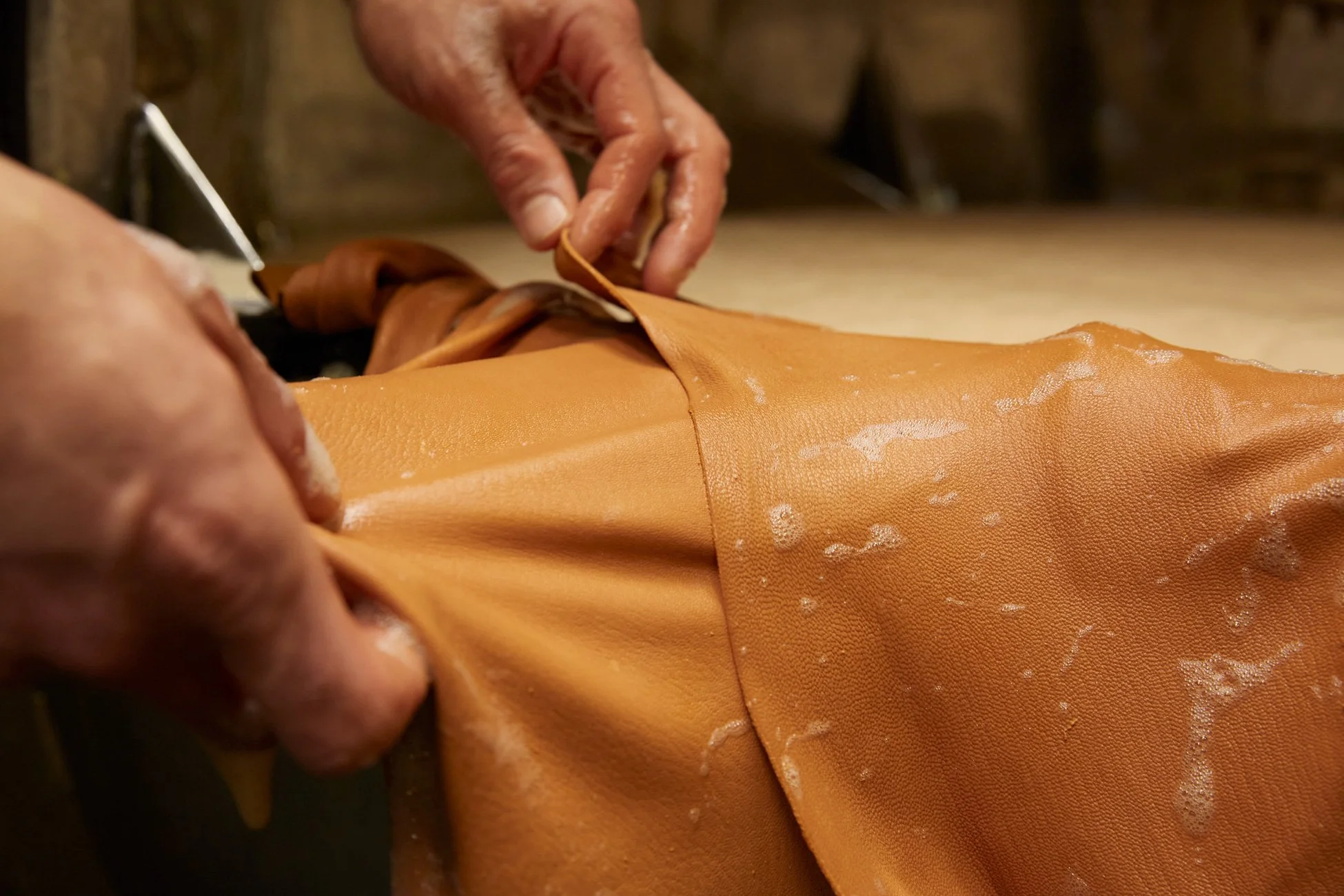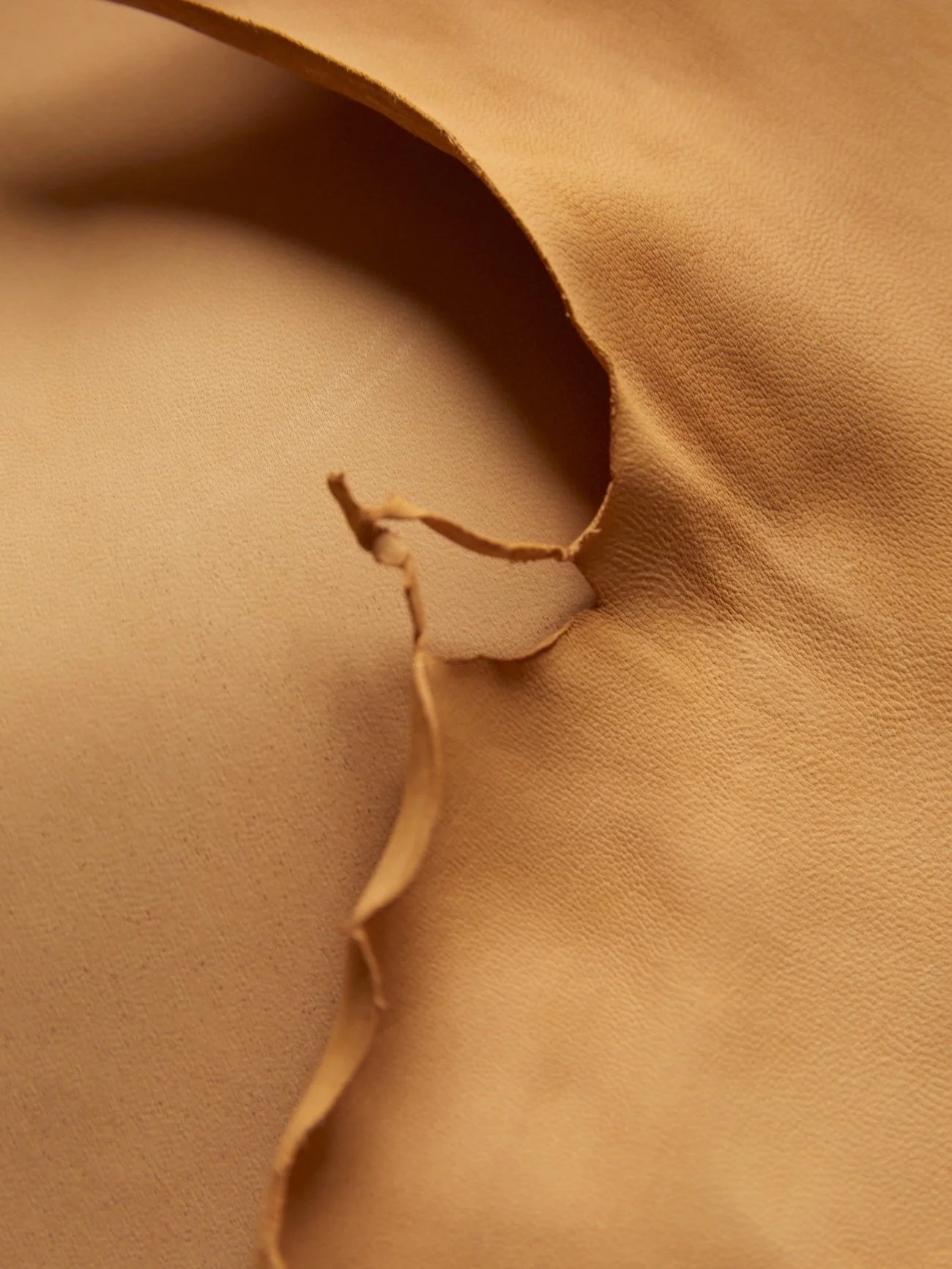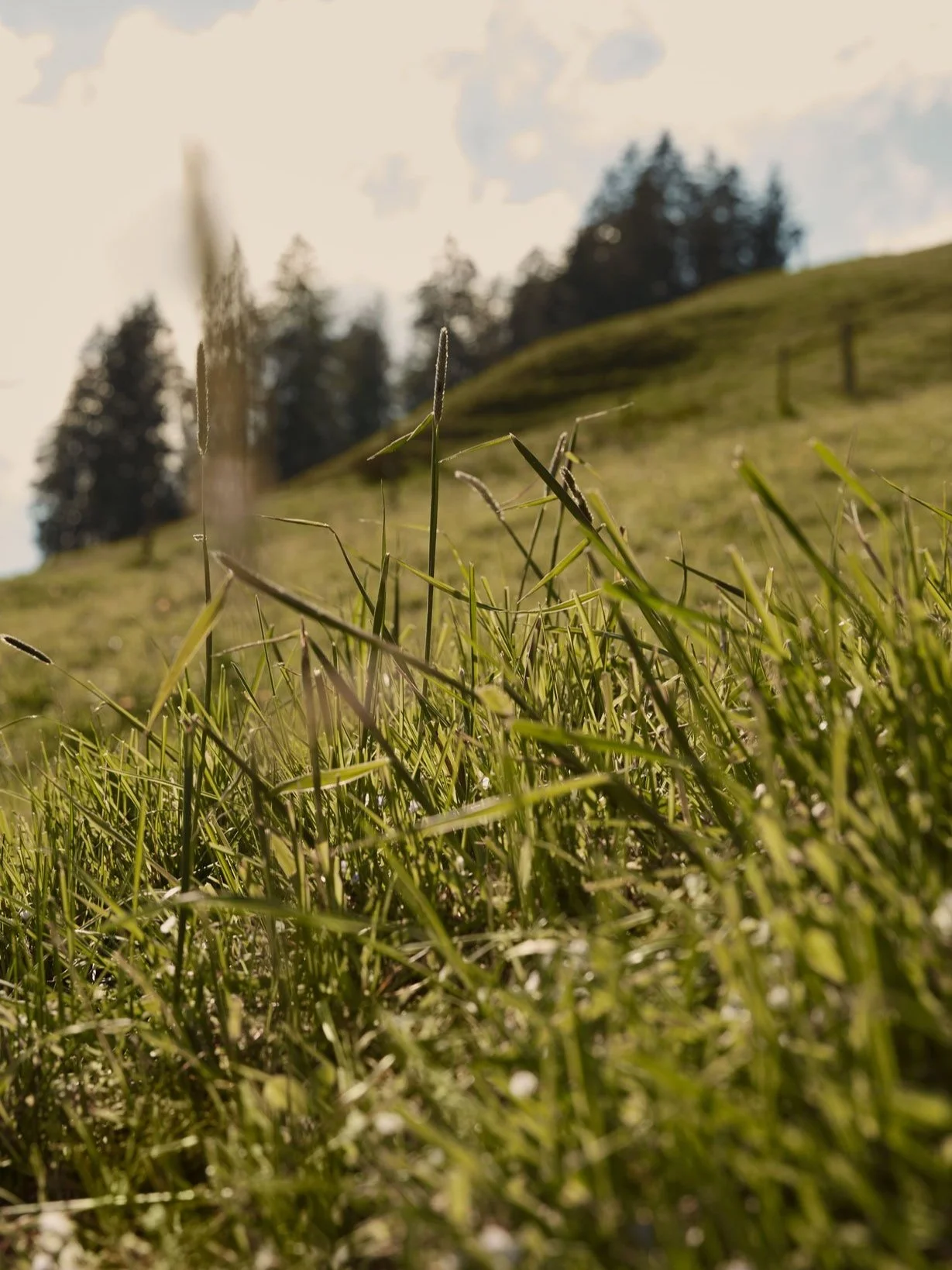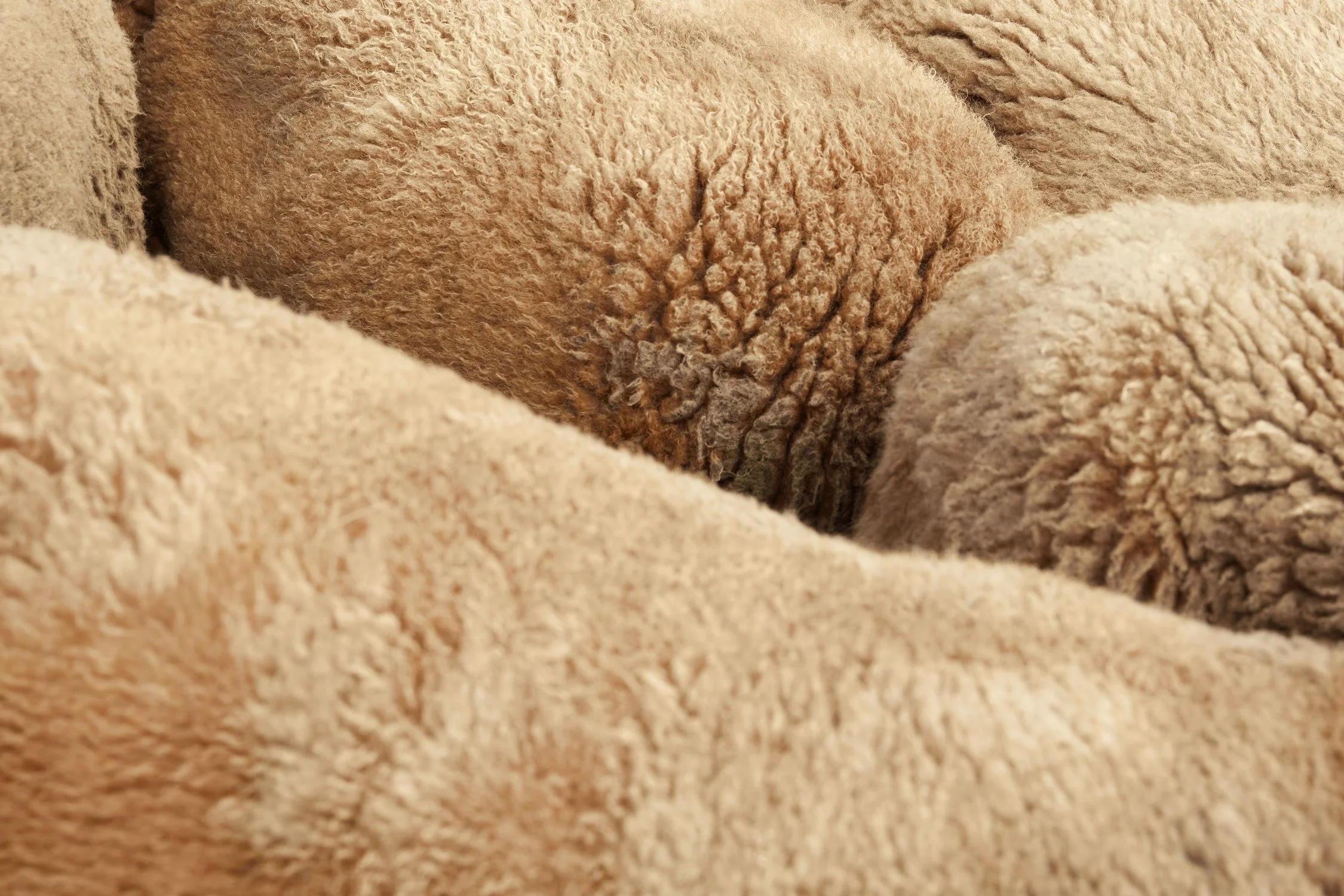Leather knowledge
Leather is more than just a material. It is a reflection of how we deal with resources, animals and responsibility. In our leather ABC, we show what makes sustainable, regional leather - briefly and concisely from A to Z.
From A for animal care to C for chrome tanning
Animal care
No leather without animals. But how animals are kept makes all the difference. Our hides come exclusively from cattle that are grass-fed and reared on organic or biodynamic farms - with plenty of space, grazing and a species-appropriate lifestyle.
Beyond bio leather
Bio leather is often used to mean vegetable-tanned leather. For us, it means more: leather from animals raised with biological responsibility. That’s why we source our hides directly from organic farms and tan them with plant-based methods. Take a look at our production process here.
Chrome tanning
Chrome tanning isn’t inherently bad — chromium III salts themselves aren’t toxic. Problems arise when handled improperly, leading to the formation of harmful chromium VI. Plus, chrome requires mining chromite, which strains resources. That’s why we rely on vegetable tanning and deliberately avoid heavy metals: better for people, animals, and the environment.
D to F: About design, embracing authenticity, and the joruney from farm to leather
Design rooted in origin
Our leather products tell stories. Each piece is a blend of origin, craftsmanship, and design. Thoughtfully regional, beautifully crafted.
Embracing athenticity instead of unity
Leather with rough edges. Small scars or differences in the surface are not a flaw, but a sign of genuine nature. That is why we leave our leather untreated and do not use any coatings to hide its unique characteristics.
Fur & Meat
Leather is generally a by-product of the meat industry - the hides come from animals that are primarily kept for food production. We also only process hides from the organic meat industry. In this way, the entire animal is used as completely as possible. (Exceptions are certain exotic leathers and hides from wild animals such as kangaroo, deer or stag, some of which come from hunting).
G to J: More About Gentle Tanning, Interior & Jewels of a Timeless Craft
Gentle tanning
The crucial process of turning raw hides into leather. We rely on small, local tanneries that tan leather carefully and eco-friendly — without toxic chemicals and always in harmony with people and nature.
Handcrafted Heritage
Whether it’s a bag, a pair of pants, or a door handle — our partners craft each piece with utmost precision and passion. Every item becomes a statement. Discover some examples here.
Interior design
Leather is more than just a fashion item - it also lives on in furniture, walls, handles and room concepts. Sustainable, sensual, durable. In the blog article "Leather in architecture", we show you a project in which our leather was used as a door handle. We love the versatility of the material.
Jewels of a timeless craft
Tanning is a craft with centuries of history. We carry it on as it was done before — guided by values that were once standard: animal welfare, transparency, and regional roots. These principles were normal long ago but faded with industrialization and globalization.
K-M: More about Climate, Longevity, and Minimal Waste
Keeping climate in balance
Holistically grazed grasslands capture more CO₂ through rotation and pasture management than forests. Studies(for example by Quantis on White Oak Pastures) show that meat from these animals can be carbon negative. When leather is made with the same responsibility, it becomes part of a closed loop and a material with lasting value. Regeneratively raised cattle absorb CO₂ through grazing. When leather is processed responsibly, it can be part of a true circular economy.
Longevity
Good leather lasts for decades - and only gets better with time. An alternative to the throwaway mentality. We have published a nice article on the topic of "Natural leather and its patina" in our blog.
Minimal waste
We aim to use the full potential of a hide — including the so-called “difficult” parts. When we process leather for other brands, we make sure to use as much as possible. We’re also happy to advise on design to develop sustainable solutions together.
P-Q: Partnership, prices, quality, values that are important to us
Partnership in production
We’re not looking for customers, but partners — for co-creative projects with vision. Whether a small label or an established studio, we welcome exchange and inspiration. Take a look at some projects e’ve had the pleasure to support in the past.
Price
Sustainability comes at a cost. Local production means fair wages and high ecological and social standards — that’s what our products stand for. When you buy from us, you invest in quality, responsibility, and long-term cycles.
Quality before quantity
Less is more. We prefer a few well-crafted pieces with a story over mass-produced goods without soul.
R to U: From R for Respectful Roots, Slow Leather, and Tenderness for Animals to U for Unique Pieces
Respectful roots & traceability
From pasture to stitch: every step with us is transparent and fully traceable. Not just an empty phrase, but a principle we live by.
Slow Leather
Just like Slow Food, Slow Leather represents mindful, local, and responsible leather craftsmanship — unhurried and driven by passion.
Tenderness for animals
The key factor for us, a given: quality leather comes only from animals that have lived well. Period.
Unique pieces with soul
Every hide is different. Each product carries its own marks. We celebrate the unique. This is how our leather creates unique pieces with soul.
V-Z: from vegetable tanned, via the X-factor to zero illusions
Vegetable-tanned
We use certified, plant-based tanning agents from quebracho, oak, mimosa, chestnut, and tara. It's an old method that's more relevant now than ever.
Worth
The leather is a byproduct of slaughter and not waste. We see it as a valuable resource that deserves respect. From start to finish.
X-factor: Attitude
Attitude is what you don't see - but feel. In every product, every conversation, every decision.
Yes to origin
We say yes to short distances, yes to cooperation with regional farms, yes to responsibility.
Zero illusions: real transparency over certificatesFor us, sustainable leather means: It's created in harmony with people, animals, and nature – responsibly and traceably. This doesn't necessarily require a certificate. Because not everything that is sustainable carries a seal. We focus on real transparency instead of symbolism – and provide insight instead of promises.
Missing a term or want to know more?
Get in touch – we're happy to chat! We're open about everything: where our leather comes from, how it's processed, and what drives us. We also offer workshops where you can learn a lot about leather production and our work. Drop us a line if you have any questions or if you'd like to chat.











